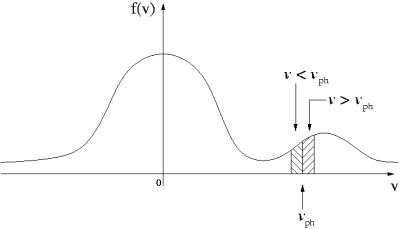 | ||
The two-stream instability is a very common instability in plasma physics. It can be induced by an energetic particle stream injected in a plasma, or setting a current along the plasma so different species (ions and electrons) can have different drift velocities. The energy from the particles can lead to plasma wave excitation.
Contents
Dispersion relation
Consider a cold, uniform, and unmagnetized plasma, where ions are stationary and the electrons have velocity
Applying linearization techniques to the equation of motions for both species, to the equation of continuity, and Poisson's equation, and introducing the spatial and temporal harmonic operators
which represents the dispersion relation for longitudinal waves, and represents a quartic equation in
If the imaginary part (
If
Because of the second exponential function at the right, the temporal dynamics of the wave amplitude depends strongly on the parameter
Wave–particle interactions
The two stream instability can be thought of as the inverse of Landau damping, where the existence of a greater number of particles that move slower than the wave phase velocity
